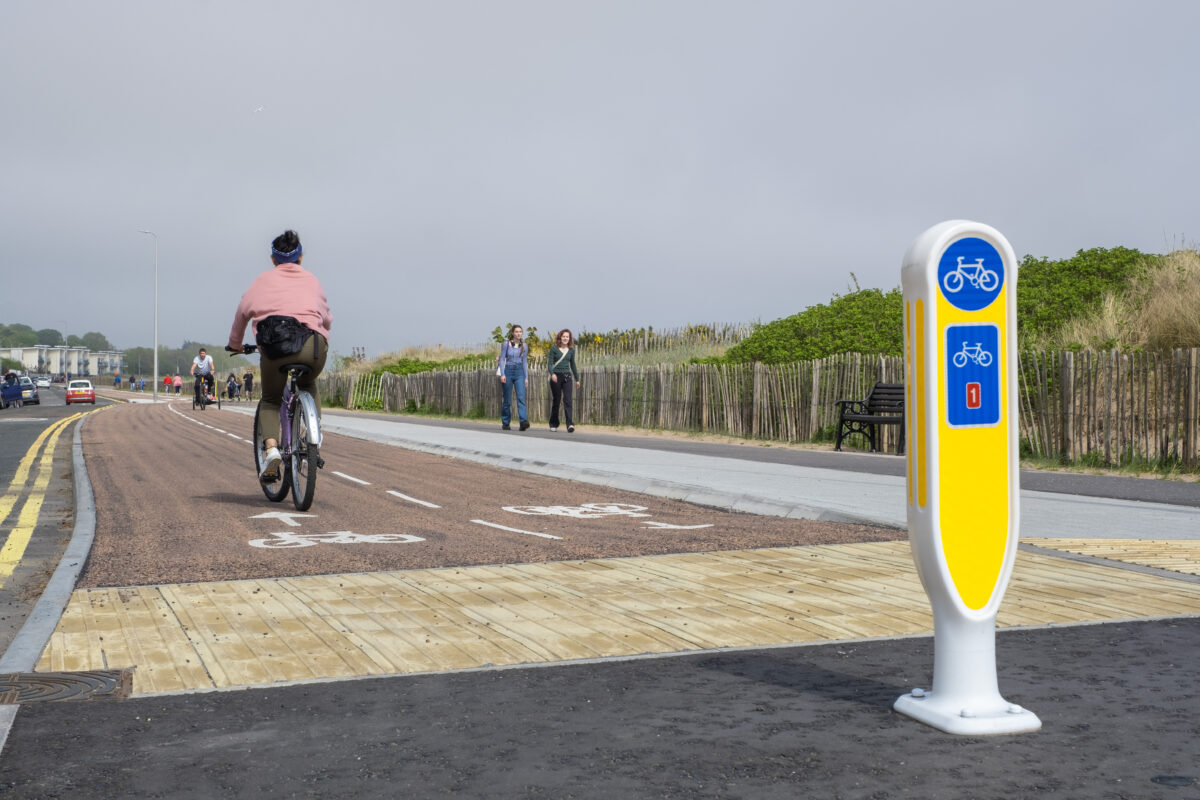Overview
Partner organisations from across Scotland – including local authorities and community-led organisations – joined us to hear about the essential Construction (Stages 5-7) deliverables, best practices and lessons learned from previous Construction projects, and to have a platform to ask questions and take part in discussions.
This event follows on from An Introduction to Concept (Stages 0-2) and An Introduction to Design (Stages 3-4) which were held earlier in the year.
Setting the Scene
Simon Strain, Head of Programme (Grants) at Places for Everyone opened the session, acknowledging recent changes to the programme and how they are invaluable to creating impactful and successful active travel projects.
Introducing the deliverables and best practices
Marie-Claire Nyinawumuntu, Principal Engineer at Sustrans Scotland, kicked off the presentations, taking us through the essential deliverables, including hints and tips. She highlighted common deliverables to look out for including the Designer’s Risk Register, Permissions, Estimating and Procurement, and the Construction Phase Plan.
Case Study: Walk, Cycle, Live Stirling
Michaela Jackson (Stirling Council) and Charlie Griffiths (Ironside Farrar) who were involved in Walk, Cycle, Live Stirling, described their experience of taking the project through the Construction stages.
Case Study: Penpont to Thornhill Safe Walking and Cycling Path
KPT Development Trust recently completed the Construction stages of this project, which will make it easier to walk, wheel and cycle between Penpont and Thornhill in Dumfries and Galloway. Caroline Buck provided us with an overview of the project and lessons learnt.
Case Study: Grampian Road / Dalfaber Drive Junction
Neil Young from The Highland Council spoke about the recently constructed project in Aviemore, highlighting what went well and key learning points to consider for the future.
Questions and Answers
Q: When it comes to the tendering process of contractors, is it better to select a contractor that has constructed active travel infrastructure before?
There are definitely pros and cons and a contractor’s experience is something that you need to be aware of. What we would say is that we’re moving into situation where we’re seeking to deliver more and more active travel infrastructure annually than we have previously, and we’re going to need every contractor that we can to be upskilled in delivering these projects. So we wouldn’t suggest ruling out a contractor with no active travel experience, and be supportive of new contractors coming forward to learn about active travel infrastructure.
Q: For Walk, Cycle, Live Stirling, was the reception from the community largely positive? You also have quite a lot of competition for space outside Stirling Railway Station. Did you work with disability groups and receive feedback from people?
Michaela: We engaged quite a lot with Stirling Access Panel and have had some feedback since the opening regarding how the station connects to the taxi ranks and potential lack of signage. It’s an interesting lesson that you can have a really good project but without something like signage being implemented, this can cause it to fall down. This demonstrates how small actions make a big project work well.
Charlie: Generally the project is quite well received and people are interacting fairly well with it. Looking at junctions, there are so many different views on how people will approach a junction, but we hope that in time, everyone will know how it works and be used to it.
Simon: PfE encourages partners who’ve completed a project and have any concerns or improvements you’d like to make, then we are more than happy to receive requests for additional funding for Stage 7 to make small additional changes. Whether it’s something to do with the light sequence signage, putting a new dropped curb that you hadn’t foreseen was going to be needed… We’re happy to look at that and try and improve projects wherever we can. We work very closely with our Research and Monitoring Units to do as much monitoring as we can on projects to capture these impacts.
Q: If all works were grant funded, how did Stirling Council satisfy in-house procurement rules?
Procurement legislation only applies when buying in external services, there is still a requirement on local authorities to demonstrate best value which is done by assessing the roads services rates against other commercial bids / contract estimate.
